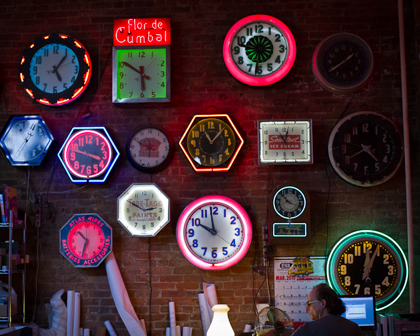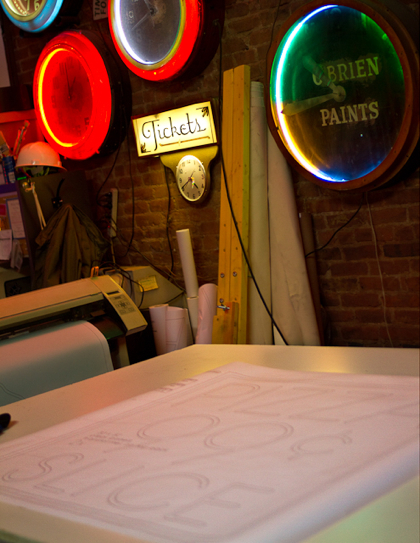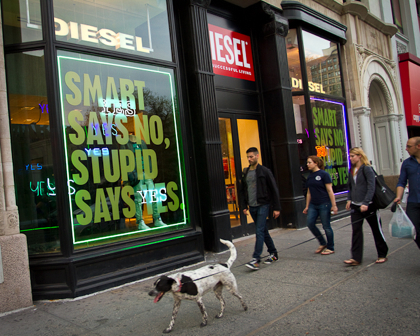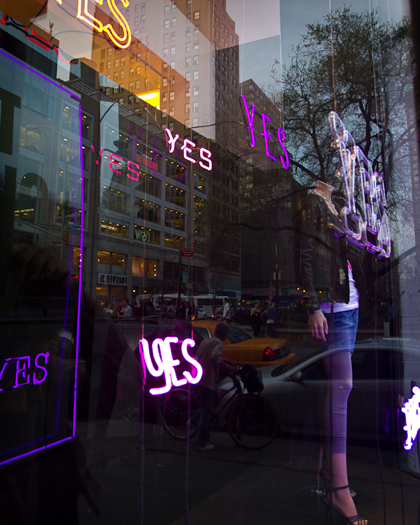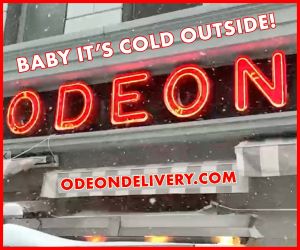Made in Tribeca #3: Let There Be Neon
About the author: Freelance photographer Asha Agnish first picked up a camera in college, simply as a means to document her theatrical lighting designs. Over the years, photography became her primary means of artistic expression; she’s primarily concerned with documenting social and natural landscapes at home and abroad. She’s also a teaching assistant at the International Center of Photography.
Shortly after I moved to Tribeca, I caught a glimpse of Let There Be Neon from afar and thought, Now there’s a good-looking bar! I later discovered that it’s actually a studio that creates custom neon signs—and a neighborhood institution, having been in business for over 30 years. Jeff Friedman and his staff recently let me observe the fabrication process from start to finish. Glass-bending is very specialized work, and Let There Be Neon is one of the few places left where artisans continue to practice the craft.
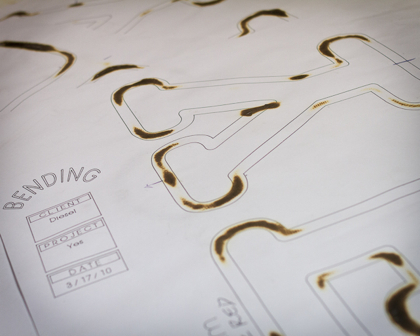
The signs being fabricated this day are for a Diesel storefront display: more than a dozen “yes” signs in different styles and colors.
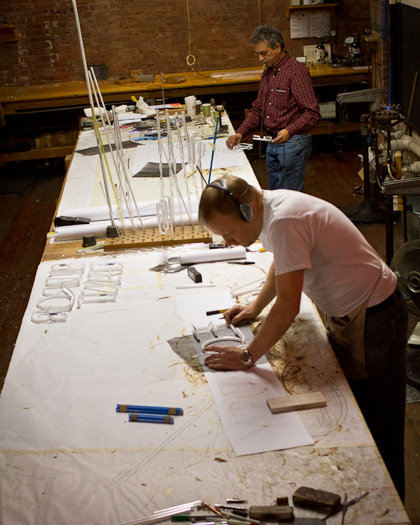
Ed and Iqbal, the glass-benders, work side-by-side in the studio. All neon signs are made from white glass tubes approximately 3 feet long, some of which can be seen at the center of the table.
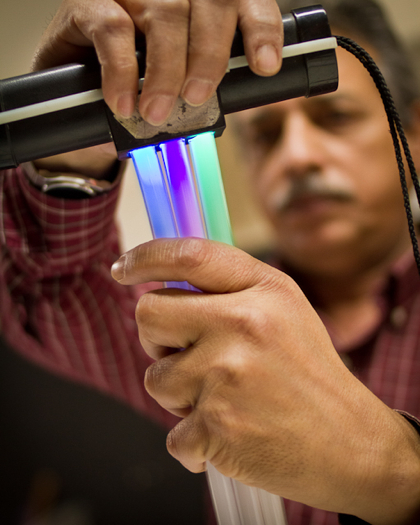
The insides of the glass tubes are coated with different phosphors, which give the tubes different color characteristics. Here, Iqbal uses a UV light to reveal the colors of three tubes. Some tubes are also painted on the exterior for a more intense color output.
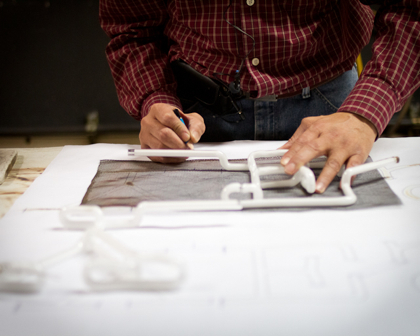
The complexity of a neon sign is determined, to a large extent, by the number of bends needed to transform a straight piece of tube or tubes into the finished word or image. Iqbal is working on the letter “E”, carefully marking where he will make the next bend.
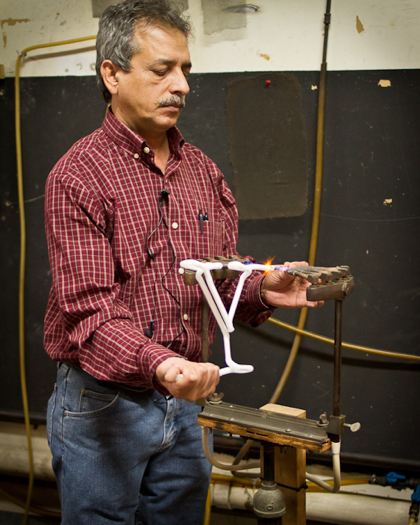
Bends are made by heating the glass tube over a small, open flame and gently pulling the tube into shape. The glass-benders move back and forth between work table and flame constantly, making marks and bends.
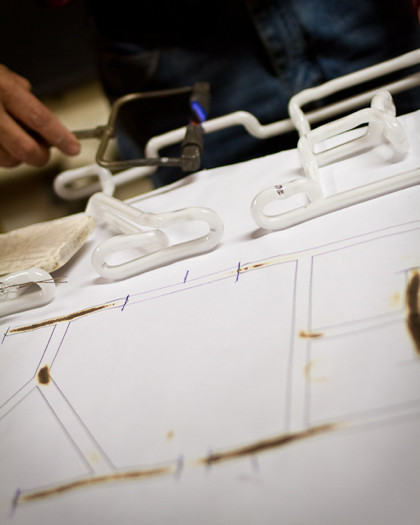
Once each letter of the “yes” sign is complete, the glass-bender uses a hand-held torch to join the letters together. While doing so, he must also blow air through the tube to prevent the hot glass from collapsing onto itself. These joints will eventually be painted black, in order to make the letters appear separate.
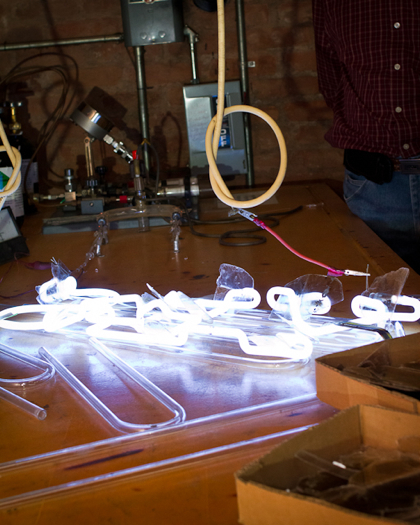
The sign then goes through a process called bombardment: A very high voltage of electricity is passed through the sign to draw out impurities and create a vacuum. Small pieces of mica are wedged into every bend of the sign to prevent the current from jumping.
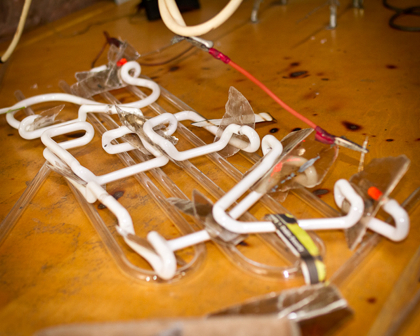
After the bombardment, electrodes at the ends of the sign glow red-hot. Once they have lost their color and the sign has cooled, it's filled with gas, a process that takes just a few seconds.
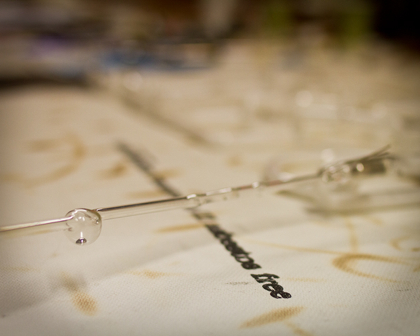
A single drop of mercury is injected into the sign and coaxed into rolling along the full length. The mercury reacts with the gas in order to produce UV light when electrified.
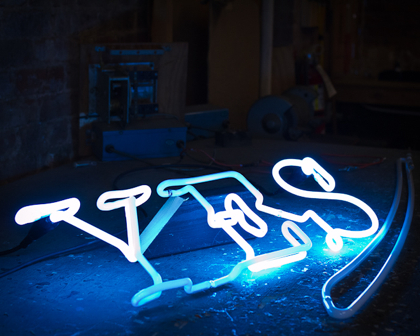
The last stage of the process is called aging. The neon sign is electrified until the color shines consistently and brightly throughout the full length.
Previous photo essays by Asha Agnish:
• Shopdogs of Tribeca
• Snow Day!
• Writing on the Wall: Part 1
• Writing on the Wall: Part 2
• A Bewitching Day
Previous Made in Tribeca articles:
• Best Made Co.
• Khushi






